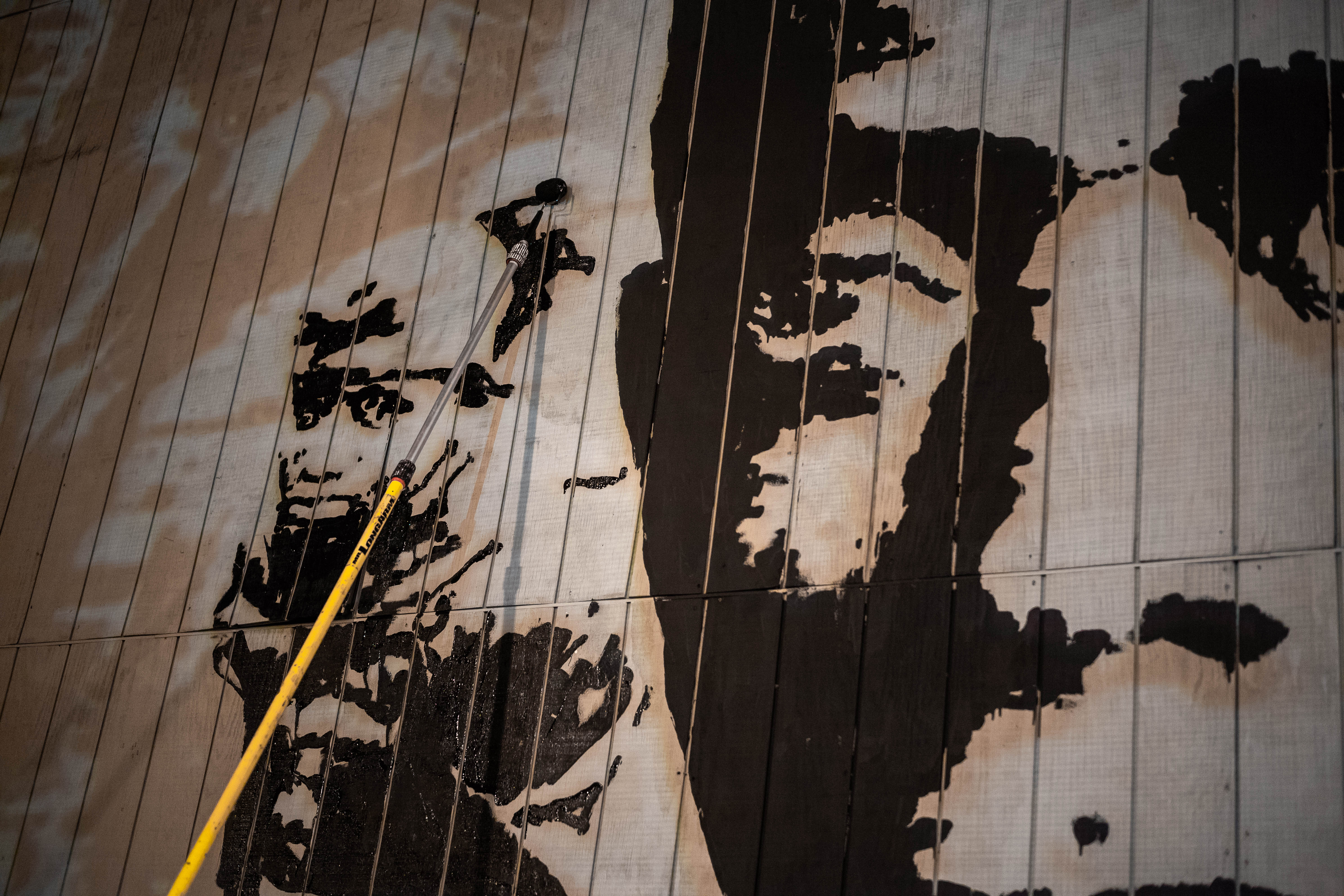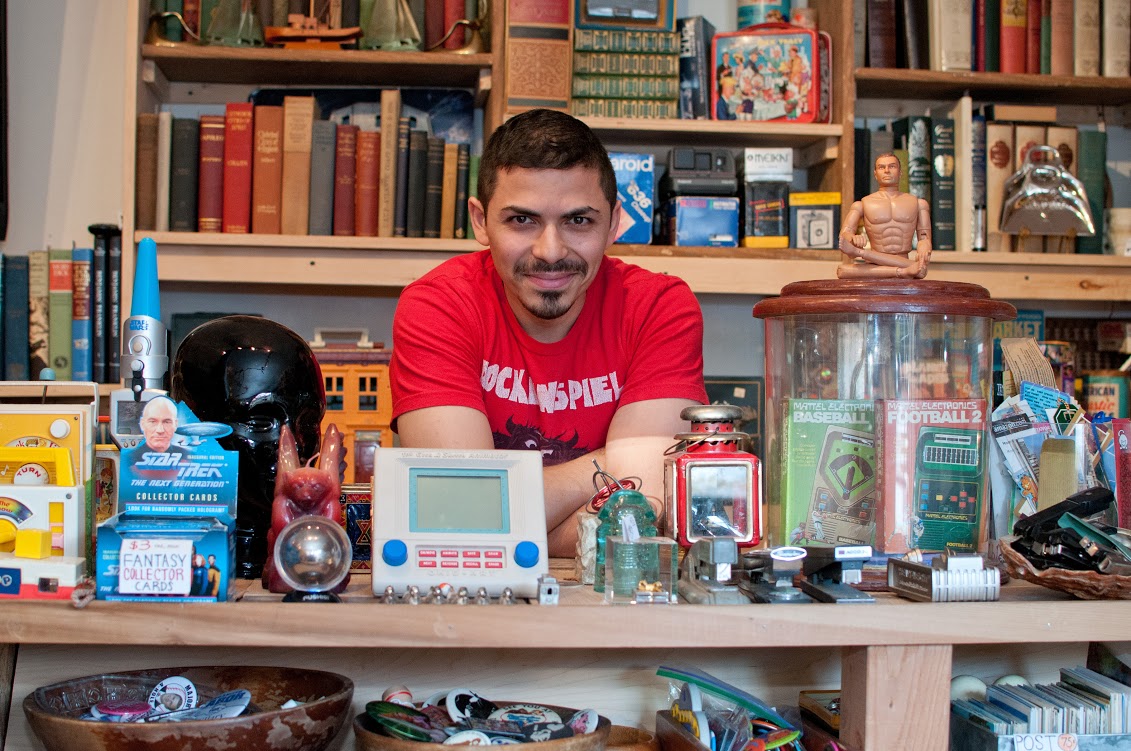Photos from Art Omi by Richard Lovrich. Images provided by Brian Tolle studios.
A brick facade stands alone in a field in Ghent. Its stone base looks sturdy at first glance but as the eyes pan upward the brick frame appears to waiver, flutter, contort as if being blown by the wind, or as if a body of water it is being manipulated by a tide or wake. The work, “Eureka” by world renowned sculptor and acting head of University at Albany’s Studio Art program Brian Tolle, was first displayed in 2000 a half a world away in Ghent, Belgium. The sculpture was never supposed to leave its original home but here it is in Ghent, New York. Getting it here was no simple task.

Conception
Erected as part of a city-wide exhibition called “Over The Edges,” the sculpture was placed over an abandoned canal-front property. Tolle’s work was modeled after a home in the city but manipulated to look as a building would reflected in the canal.
“The curator was very generous,” recalls Tolle during an interview in his office at the University at Albany sculpture studio. “He had us come over as often as wanted to live in the city, to experience the city, to just walk the streets of Ghent.”
Tolle strolled along the grand canal taking notice of all the houses lining it. “They were all beautiful examples of whatever period they were made—baroque gothic—the facades were all so beautiful.”
Tolle was so interested in how perfect these houses were that he inquired with residents. He was told that at some point after World War II the city had collected a number of facades and assembled them along the canal.
“It was Disneyfication in some way—so there was this superficial quality to this seemingly very historic place. It got me thinking about facade,” says Tolle.
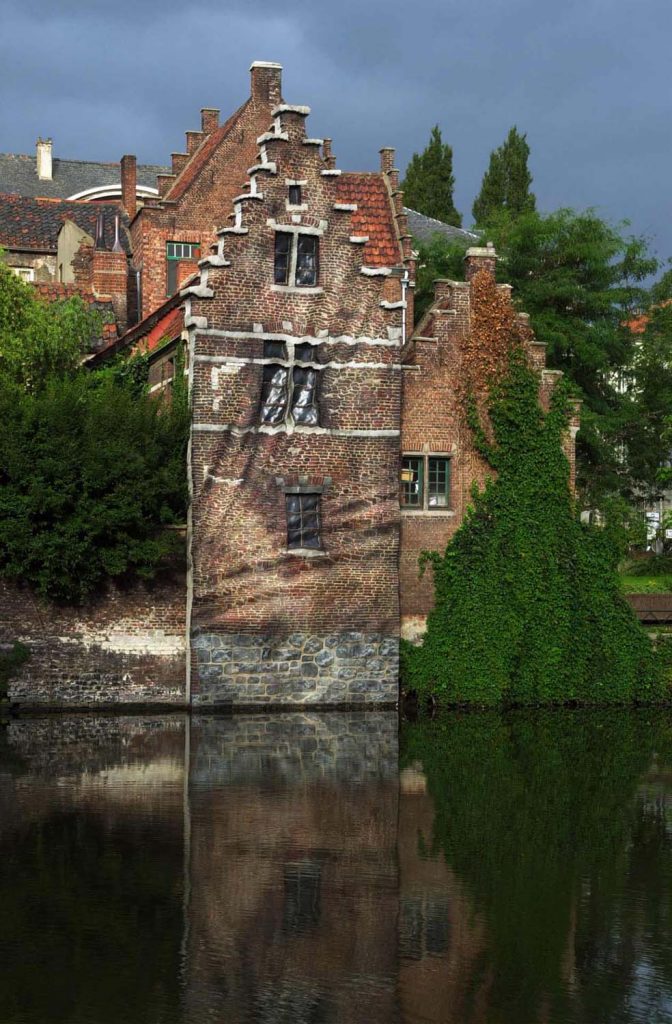
One house along the canal wasn’t exactly special. “There was one simple brick Flemish house that was abandoned at the time that caught my interest,” he explains.
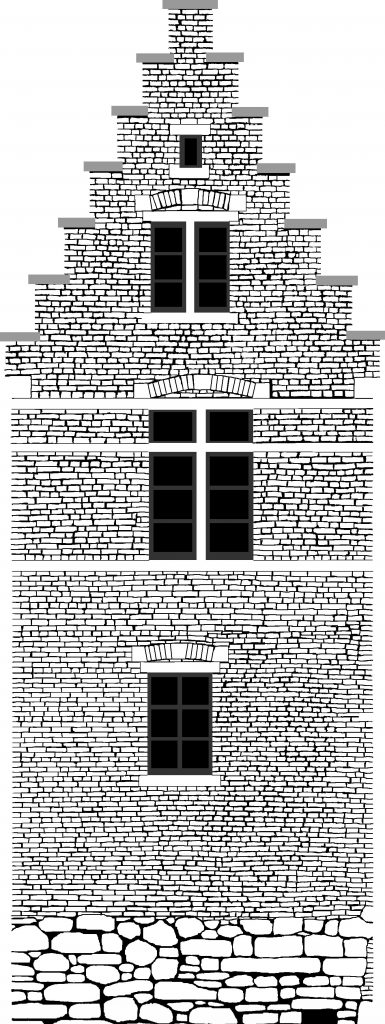
Tolle and his partner and studio runner Brian Clyne used a program to create a wireframe image of every brick that made up the facade. Then they applied a program used to create special effects in disaster movies like “The Perfect Storm” to manipulate the frame to include the behavior of water. To get the very specific wave and wake effects contained in the physical sculpture they employed three tour boats typical to the area and ran them through the water capturing the disruptions they left behind.
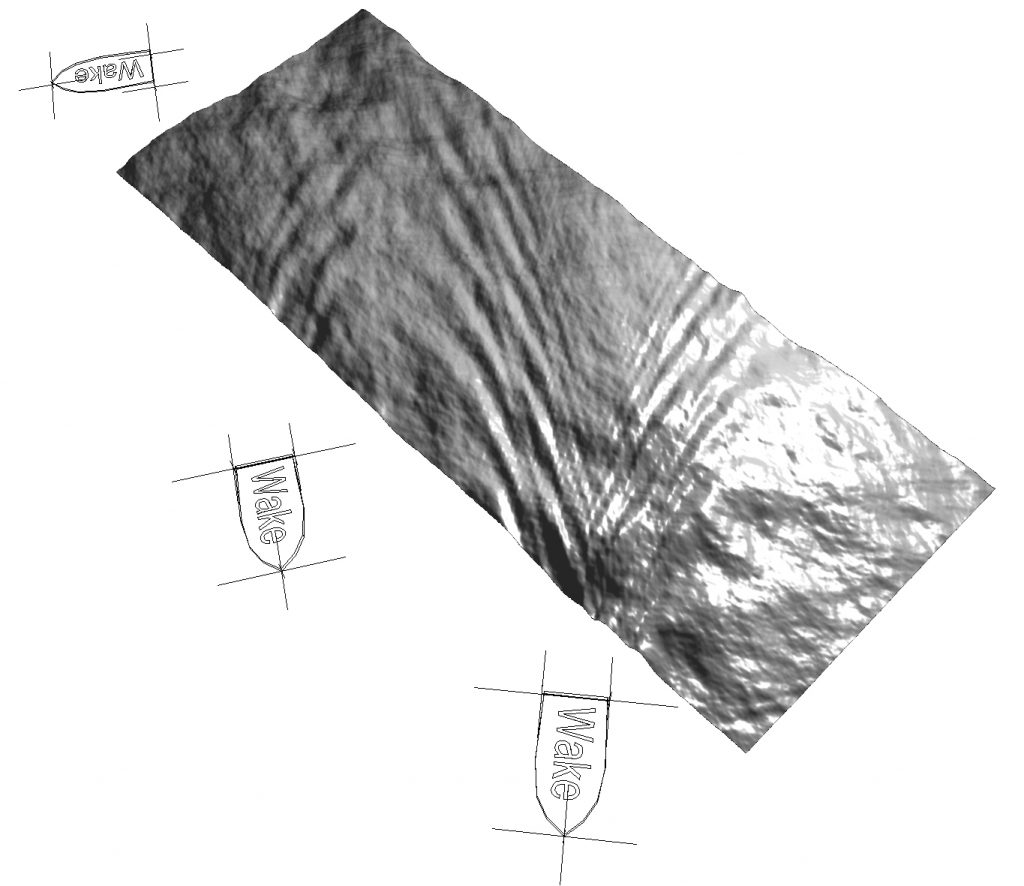
The structure was then created on a CNC Router with marine-grade plywood and foam, then coated in polyurethane. The structure was so large at 40 feet that it had to be hand painted. It was then placed over the facade of the Flemish-style house that inspired it.

Displaced
It was set to remain there in Belgium but the building owner had other plans and “Eureka” was sent back to America where Tolle had it placed in safe storage.
As it turns out the storage wasn’t so safe. Instead the work was “misplaced” and left in a field for years. When Tolle decided to return to the work he found it dismembered and torn, dismantled by the winds of a hurricane.
Tolle and Clyne found it scattered over a 5-acre field. The marine-grade plywood was turned to pulp, animals were living inside the structure. It was infested with ants.
It took an entire year for the piece to dry out while stored in Tolle’s studio in Roxbury in Dutchess County. From there the piece was cleaned of infestations, patched together and repainted.
Reborn
First exhibited in America at C24 Gallery in Chelsea, lying horizontally on the floor, the work caught the eye of representatives of Federal Hall where Tolle is now the artist in residence.
“Being that it was this Dutch settlement that has seen so many iterations, that has constantly been morphing I felt that it was a perfect place for this Dutch facade,” says Tolle of Federal Hall.
It was there that Nicole Hayes, curator and project manager at Art Omi, saw the piece. “It was commissioned in Ghent, Belgium so having it live in Omi in Ghent, New York was a perfect fit. They installed it really beautifully so it is interesting to see now something so sight-specific takes on new meanings while being presented in different places at different times.”




